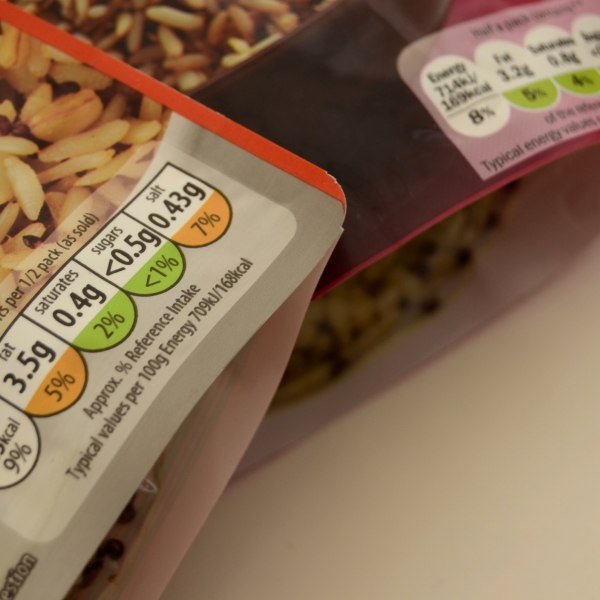An interview with Stefanie Vandevijvere
To what extent is food companies contributing to healthier food environments?
As part of the STOP project, the Business Impact Assessment on Obesity and Population Nutrition (BIA-Obesity) assessed for the first time the commitments and practices of Belgium's and France’s largest food companies around nutrition, health, and obesity prevention.
We talked to Stefanie Vandevijvere, Senior Public Health Nutrition Scientist at Sciensano to learn more about the findings of this assessment.
How did you assess food companies’ commitments and practices on food environments and nutrition?
The largest food companies in Belgium (N=31) and France (N=33) were selected in the following sectors: packaged food and non-alcoholic beverage manufacturers, quick-service restaurants, and supermarkets. The researchers then applied the internationally developed “Business Impact Assessment on Obesity and Population Nutrition” (BIA-Obesity) method. This method evaluates companies’ commitments and practices in 6 action areas:
- The company’s nutrition strategy
- Product formulation
- Product labelling
- Product and brand promotion
- Product accessibility
- Relationships with other organisations.


For all selected companies, the publicly available commitments in these 6 action domains were analysed. This included an analysis of company websites, annual reports, press releases, and websites of federations and governments. Within the domain 'Company nutrition strategy', the researchers looked at the company's overall policies and commitments towards obesity prevention and the improvement of nutrition and health of the population.
Within the 'Product accessibility' domain, the availability and affordability of 'healthier' foods compared to 'less healthy' foods were assessed. We did this by examining the share of healthy products within the complete product portfolio of a food company and its pricing and discounting strategy. Within the domain of ‘Product and brand promotion’, commitments to reduce children's exposure to unhealthy food advertising were examined. The researchers also contacted the companies to supplement and confirm the publicly available information.
To assess company practices we also assessed the median Nutri-Score of product portfolios, the proportion of products not-permitted to be marketed to children (using the World Health Organization Regional Office for Europe nutrient profile model), and the proportion of Ultra-Processed Food (UPF) products (using the NOVA-classification), including those displaying Nutri-Score on the front-of-pack. Promotions in supermarket flyers were analysed over one-year and the proportion of quick-service restaurants around schools was assessed.
Can you tell us a bit more about the research and what you found?
For each company, we summarised, nutrition-related commitments and practices based on an internationally standardised methodology and scoring criteria. The study allows us to see where they score well in their contribution to a healthier food environment, where they can do better, and how they perform compared to their peers.
The overall scores for companies' commitments to improving population nutrition and obesity prevention in 2020 ranged from 2% to 75% in Belgium and 2% to 74% in France. This means that there is a wide variation in commitment scores between companies, and they can all make great strides in improving their commitments. In both countries, most companies had a nutrition strategy in place. Some companies committed to displaying the Nutri-Score on their products or to reducing the levels of salt, sugar, and saturated fat in specific product categories. However, commitments within the action areas 'Product accessibility' and 'Product and brand promotion' were very weak. There was a big difference among both countries for the overall scores from supermarkets (French supermarkets (median score 12%), Belgian supermarkets (median score: 46)).


This is likely because the selected supermarkets in France did not verify and share commitments publicly, while in Belgium all supermarkets did. Some supermarkets in Belgium also had more ambitious commitments in place (on shelf labelling of Nutri-score) for example. In Belgium, about 60% while in France about 40% of companies participated in the study and verified commitments or supplemented commitments with additional information. Across both countries, the availability, and marketing of products were mainly for unhealthy foods.
What are the key findings and why are they so important?
Publicly available nutrition-related commitments of the major food companies fall short of best practice recommendations. We found that the largest share of company sales was for ultra-processed product categories and product categories entirely not-permitted to be marketed to children. Across both countries, the research also exposed predominantly unhealthy practices. The performance indicators show large potential for improvement across policy domains and industries. We need governments to implement regulations to support food industry efforts and ensure that their commitments translate into improved practices.
If you had to summarise in one sentence, what is the main takeaway for policymakers?
The main takeaway is that stronger and more comprehensive government regulations are needed to create healthy food environments as contributions from food industries to create healthy food environments are very poor.
This includes mandatory reformulation and front-of-pack labelling policies, as well as comprehensive restrictions on unhealthy food marketing to children across media and platforms, and fiscal policies to improve the affordability of healthy diets. In countries like the United Kingdom (UK), it has been shown that while some very small improvements can be made through voluntary regulation (i.e., sugar reduction in foods), quicker and much larger reductions are seen with mandatory regulation.


What’s next in this research area?
We hope to implement the BIA-Obesity in more EU countries to compare company commitments and practices across geographies. This process can also become a key monitoring tool for checking progress over time. More performance metrics (i.e., about food accessibility) could be included in future iterations of this data becoming more widely available. In addition, a BIA-Sustainability is under development so that the major food companies can be benchmarked according to their commitments and practices on environmental sustainability.
Both BIA-Obesity and BIA-Sustainability assessments can contribute to providing monitoring and accountability concerning industry commitments made as part of the Code of Conduct for responsible food business and marketing practices developed as part of the Farm to Fork Strategy.
Read the full report for Belgium and France, including sector-specific recommendations for future action to learn more.
ABOUT INFORMAS and BIA Obesity:
INFORMAS (International Network for Food and Obesity / Non-communicable Diseases (NCDs) Research, Monitoring and Action Support) is a global network of public-interest organisations and researchers that aims to monitor, benchmark and support public and private sector actions to increase healthy food environments and reduce obesity and NCDs and their related inequalities. The Business Impact Assessment on Obesity and Population Nutrition (BIA Obesity) is developed by INFORMAS, is a tool and process for benchmarking food and beverage company policies and practices related to obesity and population-level nutrition at the national level.
About the STOP project:
Led by Imperial College London and part of the Horizon 2020 programme, the Science and Technology in childhood Obesity Policy (STOP) is a four-year European Commission-funded project which brings together 31 international research, advocacy and governmental organisations from 16 countries to generate scientifically sound and policy-relevant evidence on the factors that have contributed to the spread of childhood obesity in European countries, and on the effects of alternative policy options available to address them. The project engages international partners from different policy-contexts in the United Kingdom, Italy, Estonia, Romania, Portugal, France, Belgium, Slovenia, Sweden, Croatia, Spain, Finland, Switzerland, with additional partners in New Zealand and the USA. For more information about the STOP project, visit https://www.stopchildobesity.eu/